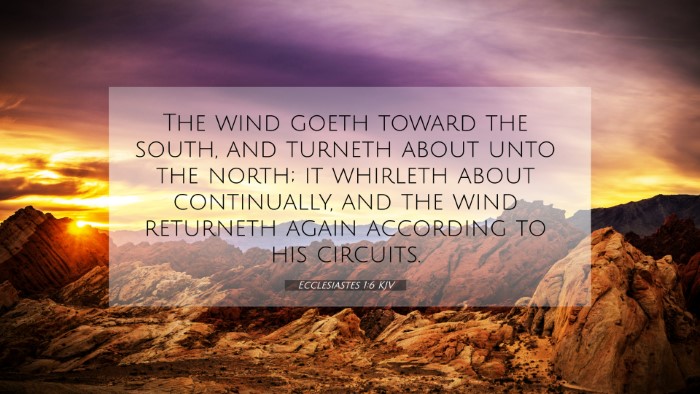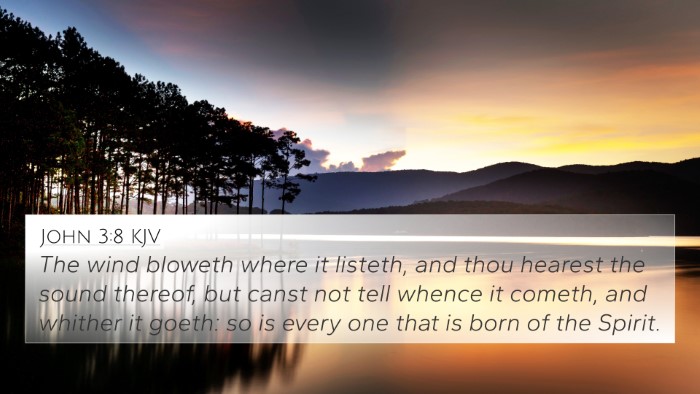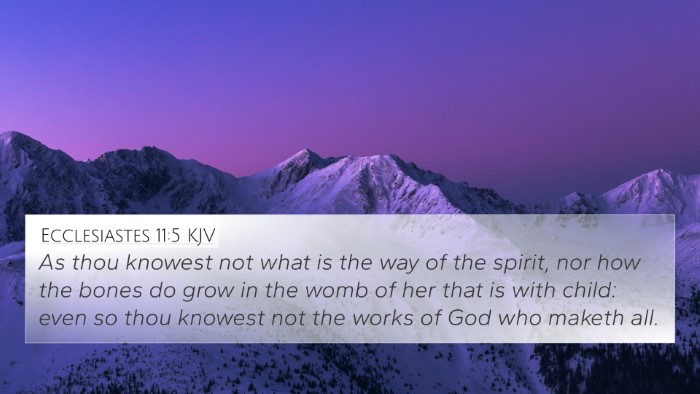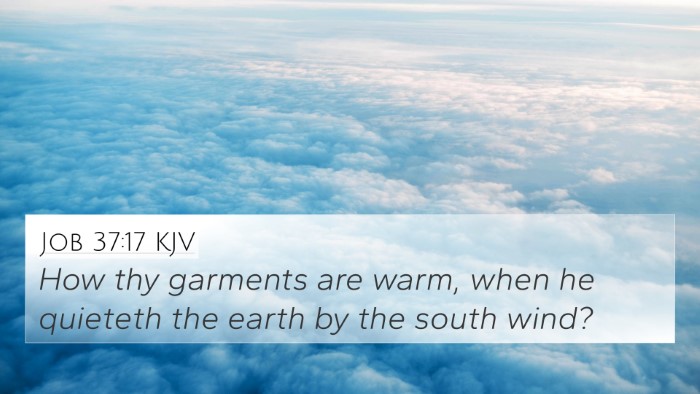Understanding Ecclesiastes 1:6
Ecclesiastes 1:6 states: "The wind goes toward the south, and turns about unto the north; it whirls about continually, and the wind returns again according to its circuits." This verse illustrates the cyclical nature of natural phenomena, emphasizing the recurring patterns in the world.
Detailed Explanation
This verse can be interpreted through the insights provided by various public domain commentaries:
-
Matthew Henry:
Henry elaborates on the theme of life's cycles and the futility of human endeavors against the backdrop of God's eternal design. He suggests that just as the wind follows a predetermined path, so too do human lives follow a trajectory set by divine will.
-
Albert Barnes:
Barnes emphasizes the observation of nature as a reflection of life. He argues that the cycles seen in the wind symbolize the repetitive nature of human existence—man strives for significance yet often remains in a cycle of vanity without true fulfillment.
-
Adam Clarke:
Clarke notes the philosophical implications of this verse, suggesting that the description of the wind speaks to the unpredictable and transient aspects of life. He posits that these natural elements serve as metaphors for the human condition, which is equally governed by cycles of time and circumstance.
Thematic Connections
Ecclesiastes 1:6 connects to various themes in the Bible. It illustrates the broader concept of the transience of life and reflects on how nature is a constant reminder of life's fleeting moments. These principles can be tied into other crucial scriptural teachings.
Related Bible Cross-References
- Job 1:14-15: The winds mentioned here represent both natural phenomena and the uncontrollable aspects of life.
- Psalm 104:4: This verse highlights the roles of winds and spirits, linking nature to divine action.
- James 1:6: A metaphorical application of wind relating to faith and stability.
- Isaiah 41:16: Reflects on God's control over the elements, reinforcing His sovereignty over life’s cycles.
- John 3:8: The Spirit's movement is likened to the wind, emphasizing its mysterious and influential nature.
- Ecclesiastes 3:1-8: Discusses the cyclical nature of time and seasons, paralleling the winds’ incessant return.
- Matthew 7:24-27: A metaphor about stability in the face of life's unpredictability, echoing the theme of cyclicality.
Inter-Biblical Dialogue
The interplay between these verses not only illustrates the themes of cycles and transitions but also brings to light the thematic connections between Old and New Testament teachings. The way natural elements are perceived can shed light on spiritual truths and human experiences.
Conclusion
Ecclesiastes 1:6 serves as a poignant reminder of life’s cycles and the constant nature of change. By understanding this verse in the context of biblical cross-references, we gain valuable insights into the human condition, the divine order of creation, and the transformative lessons that arise from observing nature. This verse encourages readers to seek deeper understanding through methods such as cross-referencing Biblical texts and engaging in Bible concordance studies.
Additional Insights for Study
For those interested in expanding their study, consider exploring:
- How to find cross-references in the Bible
- Tools for Bible cross-referencing
- Identifying connections between Old and New Testament
- Cross-referenced themes in the Bible
- Comparative study of Pauline epistles
Engaging in these methods will enhance your understanding and appreciation of the interconnectedness of the Scriptures.












